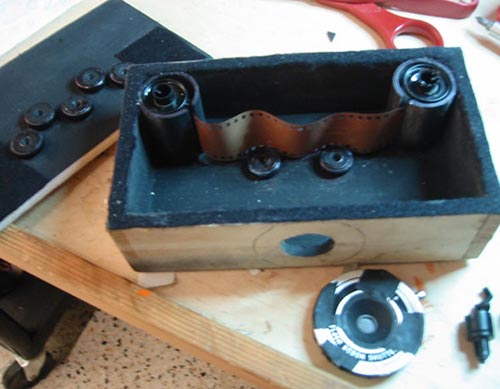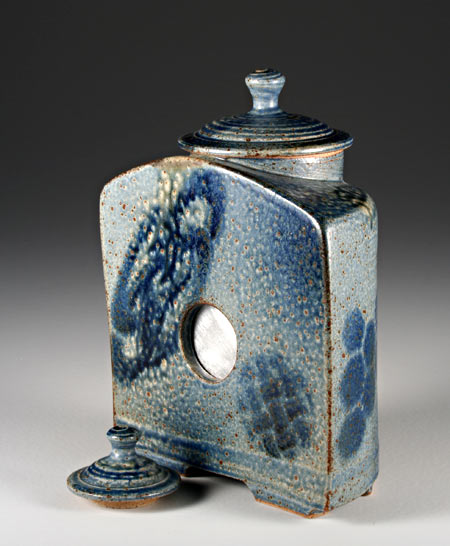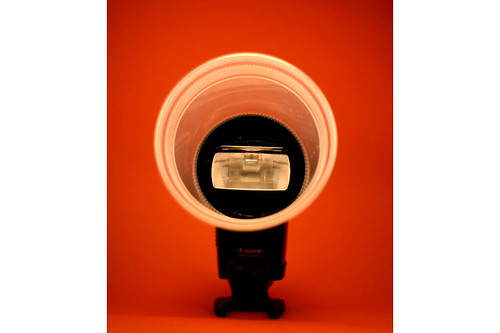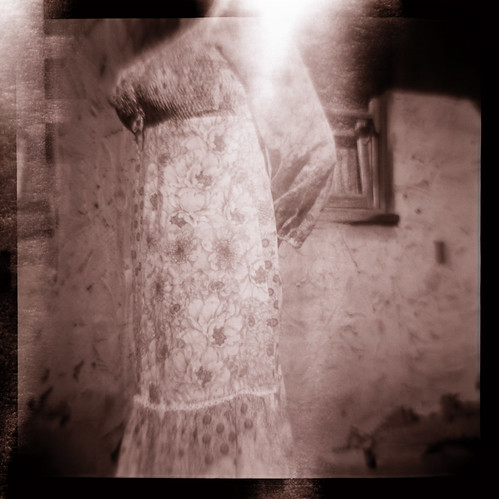Photographer and camera hacker extraordinaire Steven Taft built this wavy film plane camera. He writes:
…the latest is a "planomorphic" box with shower door rollers to guide the film along several wavy paths. I ran 2 rolls through it yesterday, and discovered a few light leaks and an exposure issue I had worried about. When the film is loaded along a path with deep bends, the single pinhole leaves dark bands down the middle of the image. One solution i had considered before the tests was to go with a multi-aperture system, but i would like to solve it as a single first. I designed this to make the rollers relatively simple to move, so i think i will try placing the film path in more of a convex arc, with the canisters towards the front of the box.
…
…it was never a very reliable/easy camera to use (hard to load, light leaks, film might jump the tracks). New version needed.
Even though the design needs some tweaking, this is a great idea!
See the results and more photos of the camera itself in this thread at f295.



